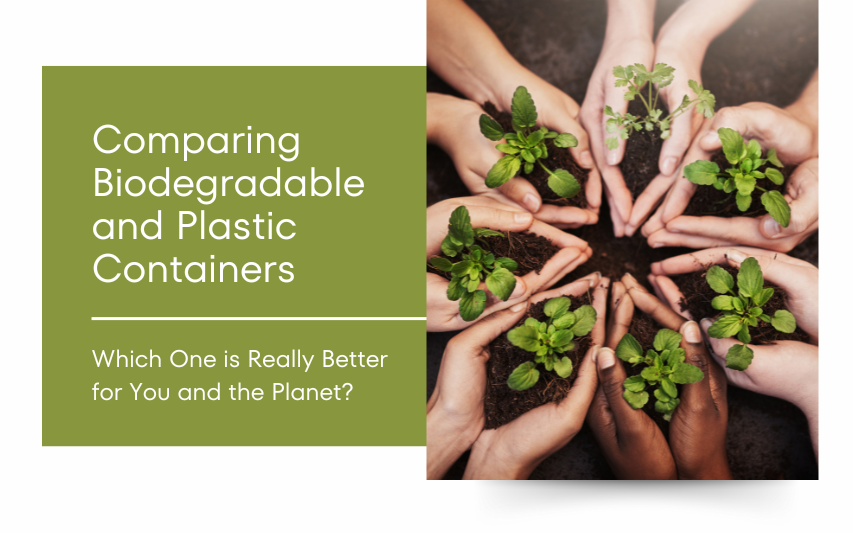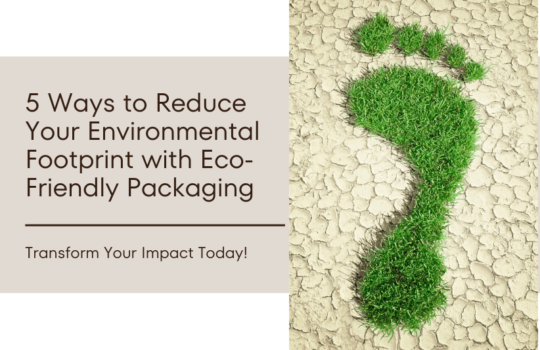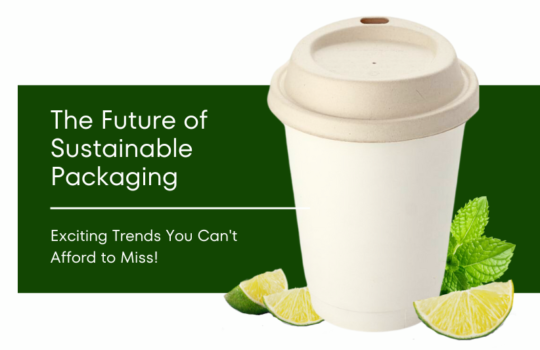Comparing Biodegradable and Plastic Containers: Which One is Really Better for You and the Planet?

The battle between biodegradable and plastic containers has heated up, with both environmentalists and consumers searching for the best way to reduce waste. But which one truly reigns supreme? Is it the eco-friendly biodegradable option or the ever-dominant plastic? In this blog, we’ll break down everything you need to know so you can make the smarter, greener choice!
Is Biodegradable Really Better Than Plastic? The Answer is More Than Just a Yes!
Absolutely, yes—biodegradable is leaps and bounds ahead of traditional plastic. Why? Unlike plastic, which can take hundreds of years to decompose, biodegradable containers break down naturally in a fraction of the time, leaving no harmful residue behind. But here’s the kicker—biodegradable packaging doesn’t just disappear; it can turn into nutrient-rich material that benefits the earth! Every time you use a biodegradable container, you’re making a powerful statement: less pollution, less harm to wildlife, and a healthier planet for generations to come. It’s not just better—it’s a game-changer for our future.
What is the Difference Between Biodegradable and Compostable Plastics? Unpacking the Confusion
While biodegradable and compostable plastics may seem like the same thing, there’s a critical difference! Biodegradable plastics are designed to break down in nature, but the timeline and conditions for this decomposition can vary. Compostable plastics, on the other hand, are specifically designed to break down under composting conditions, usually within industrial facilities. Compostable plastics return to the earth much faster, turning into compost that enriches the soil. In short, all compostable plastics are biodegradable, but not all biodegradable plastics are compostable. So, if you’re looking for a true eco-friendly option, compostable is the way to go!
What Are the 4 Main Benefits of Biodegradable Packaging? Prepare to Be Amazed!
Let’s talk benefits, because biodegradable packaging isn’t just about saving the planet—it’s packed with advantages! Here are the four standout reasons why biodegradable packaging is the superior choice:
- Reduces Pollution: Unlike plastic, which fills landfills and pollutes oceans, biodegradable packaging decomposes naturally, drastically cutting down environmental waste.
- Preserves Wildlife: No more harmful plastics ending up in the stomachs of sea turtles and birds. Biodegradable materials break down safely without endangering animals.
- Saves Energy: The production of biodegradable materials uses less energy compared to traditional plastic manufacturing, helping to lower your carbon footprint.
- Supports Sustainability: Biodegradable packaging not only disappears—it can actually nourish the soil, contributing to a healthier ecosystem. Talk about a win-win!
What Are the Disadvantages of Biodegradable Plastic? The Challenges You Need to Know
As amazing as biodegradable plastics are, they’re not without challenges. First, the decomposition process for biodegradable plastics can take time and may require specific conditions, such as heat or moisture, which aren’t always available in typical landfills. Second, the cost can be higher compared to conventional plastics, which can make it less accessible for some businesses. Finally, there’s a lack of widespread infrastructure to handle biodegradable waste, meaning many biodegradable plastics may end up in places where they can’t properly decompose. But here’s the silver lining: with increasing awareness and advancements in technology, these challenges are being tackled head-on!
So, Which is Better: Biodegradable or Plastic?
The verdict is clear—biodegradable containers are the superior choice if you’re looking for an option that benefits the environment, reduces pollution, and helps build a more sustainable future. While there are challenges to overcome, the undeniable advantages of biodegradable far outweigh the negatives of traditional plastic. With biodegradable packaging, you’re not just making a choice for today—you’re investing in a healthier tomorrow.
The next time you pick up a container, make it biodegradable and be part of the movement toward a greener world!







